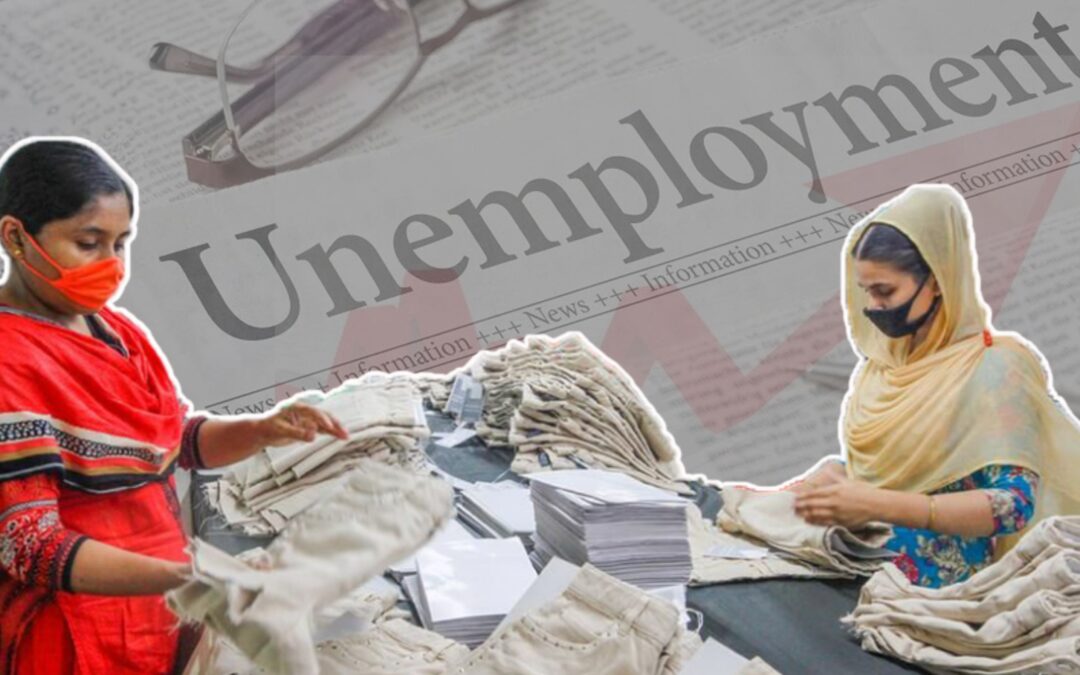Bangladesh, once an agrarian economy, has undergone considerable structural changes over the past few decades. With a focus on industrialization, the country has transitioned from its reliance on agriculture to becoming one of the fastest-growing manufacturing hubs in South Asia. Over the past two decades, industry has become the major contributor to the country’s GDP, mirroring trends in other developing nations. This industrial boom has been driven primarily by the manufacturing sector, with the Ready-Made Garment (RMG) industry taking center stage.
However, despite manufacturing still contributing a large portion of the country’s GDP, around 24.97% in 2023-2024 (p), there are emerging concerns about its future sustainability. Over the past decade a new shift has occurred, which is a rise in the service sector. As per the Bangladesh Economic Census 2024, the service sector now dominates economic activities, accounting for 91.23% of economic units, up from 88.46% in 2013. Meanwhile, the share of manufacturing units has decreased from 11.54% in 2013 to 8.77% in 2024.
In many developing countries, a large pool of unemployed workforces is often absorbed into the manufacturing sector, boosting overall productivity compared to the traditional sectors like agriculture. Bangladesh has followed the same model, leveraging its abundant, cheap labor to attract foreign investment and expand manufacturing capacity. The RMG sector, which has been central to this growth, has created millions of jobs, making Bangladesh one of the largest garment exporters in the world.
According to the latest Labour Force Survey (LFS) of 2024, the manufacturing sector currently accommodates around 8.08 million of the total employed population in Bangladesh. Of this, approximately 3.7 million workers are employed in the RMG sector, which accounts for around 5.36% of the total employed population. Yet overall employment in manufacturing has gradually fallen in recent years.
Figure 1: Employed population in manufacturing sector
Source: Various years of LFS, BBS
While this sector remains a crucial contributor to Bangladesh’s economic output, its ability to generate employment has become a point of concern and raises several critical questions. This increase in sectoral output without increasing corresponding employment has been termed as “jobless growth” in the manufacturing sector. In fact, this could signal the early onset of what is known as premature deindustrialization, where a country’s manufacturing sector begins to lose its share of jobs before it reaches the income levels seen in developed countries that have successfully transitioned to services.
The key driver of this “jobless growth” is the rise of automation and the introduction of labor-saving technologies, particularly in the context of the Fourth Industrial Revolution (4IR). While automation boosts production efficiency, it also reduces the need for labor, particularly in low-skilled positions.
But who bears the toll of this shift toward automation and labor-saving technologies? Data from various years of the LFS indicate that female employment in the manufacturing sector has remarkably reduced. Female participation in this sector increased from 12.44% in 2010 to 22.5% in 2013, but it has sharply declined since then, falling to just 8.52% in 2024. In contrast, male employment remained relatively stagnant, contributing to a growing gender disparity within the sector.
Once a hub for female employment, the RMG sector is now undergoing a process of “defeminization,” raising concerns about the future of female labor force participation in Bangladesh. Female workers in the sector face multiple challenges, including high work pressure due to automation, lack of maternity leave and benefits, delayed salary payments, informal leave policies, etc. Furthermore, incidents like the 2013 Rana Plaza collapse, the 2012 Tazreen Fashions fire, and the recent 2025 Mirpur fire have underscored the persistent safety risks faced by workers, particularly women, in the garment industry. These tragedies have raised important questions about the security and welfare of workers in Bangladesh’s manufacturing sectors.
In addition, there exists a gender wage gap and skill gap, further complicating the employment dynamics for women. Most women are employed in low-skilled positions, with few in managerial or decision-making roles. The rise in automation only exacerbates this, as machines that once required 4-5 operators can now be managed by a single individual handling multiple machines. While automation increases productivity, it also displaces a significant portion of the workforce, particularly those in low-skilled jobs
This sector is also facing uncertainty due to Bangladesh’s upcoming graduation from LDC status in 2026. This transition will result in the loss of various export benefits, making it more difficult for Bangladesh to maintain its competitive advantage in global markets. The country will also no longer be able to rely on its low-labor-cost model, which has been an impactful factor in attracting foreign investment. As a result, firms in Bangladesh will likely be forced to adopt more labor-saving technologies to remain competitive, further reducing the number of available jobs in manufacturing.
Moreover, ongoing trade turbulence, such as the US-imposed tariff rates on Bangladeshi goods, has put Bangladesh’s export status at risk. Additionally, fluctuating raw material costs, political instability, labor unrest, and restrictions on land port exports via India have led to increased operational and logistics costs and potential delays for exporters relying on these routes.
To secure a sustainable and inclusive future for Bangladesh’s manufacturing sector, urgent actions must be taken. This includes investing in workforce skills, promoting gender equality, adopting advanced technologies, strengthening labor protections, and facilitating the transition from LDC status. Additionally, the country must diversify its industrial base, foster an inclusive economy, and address global trade challenges. By embracing these changes, Bangladesh must ensure that its manufacturing sector remains competitive while also ensuring that the benefits of economic growth are shared more equitably across its society.



RECENT COMMENTS